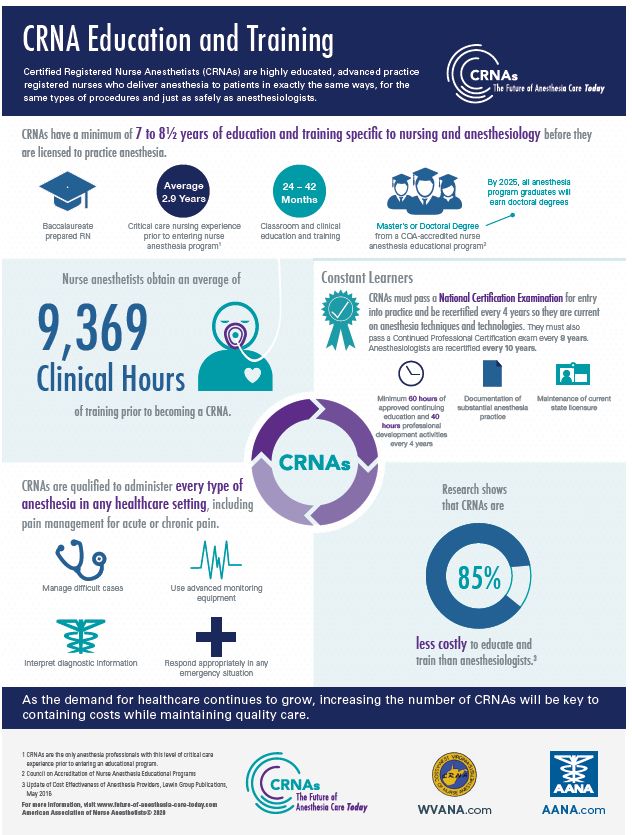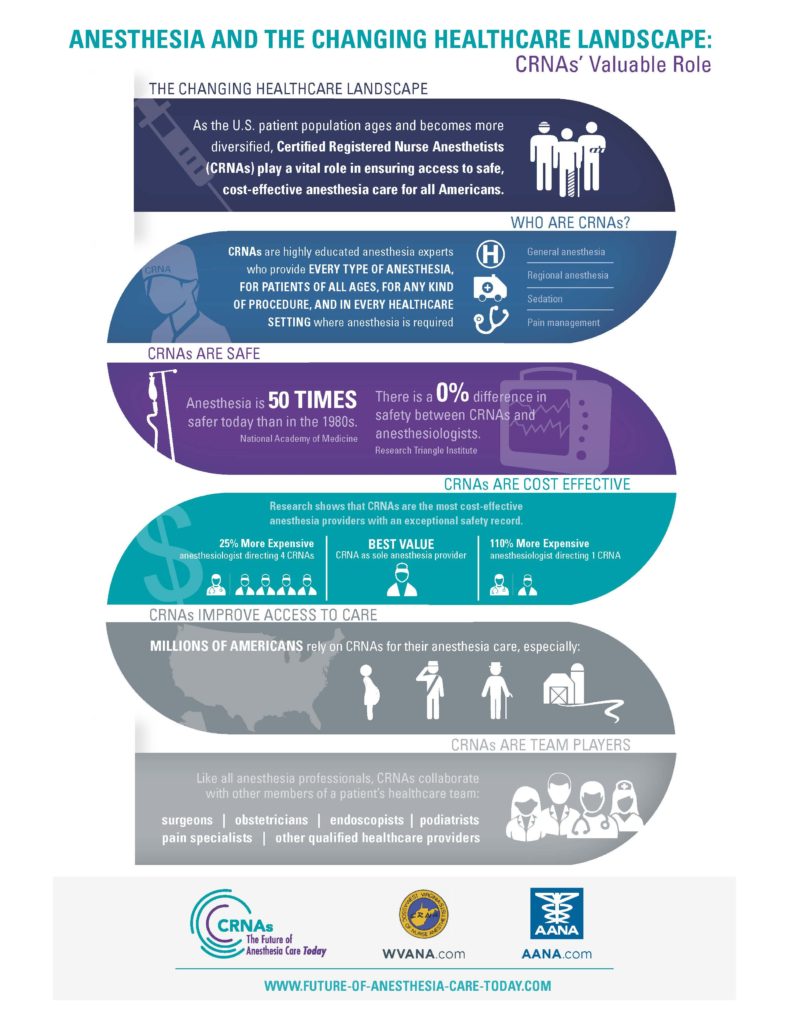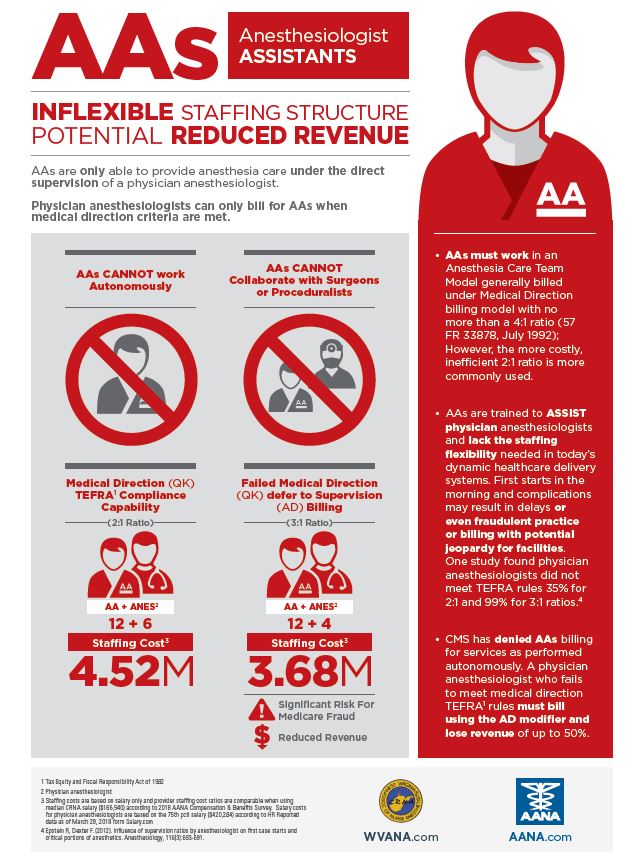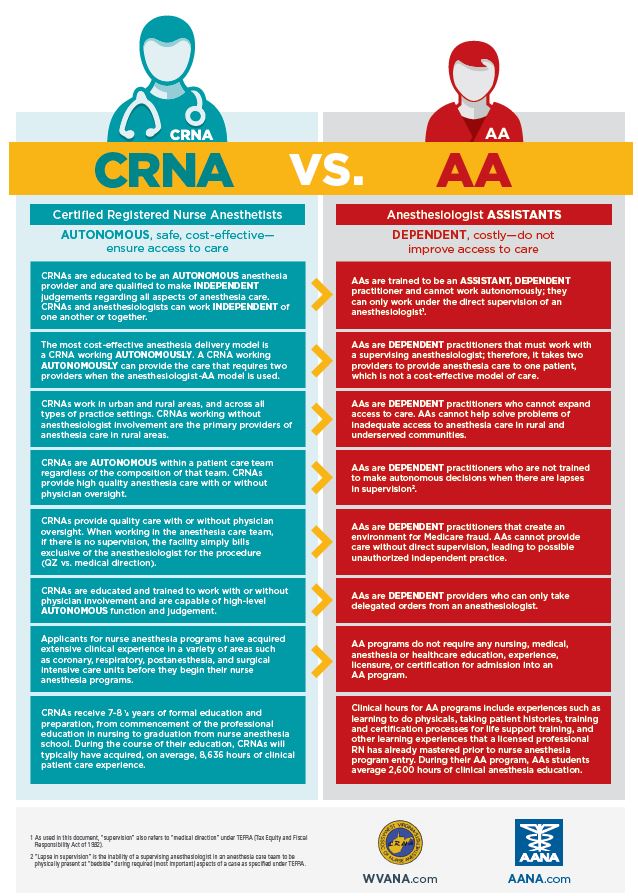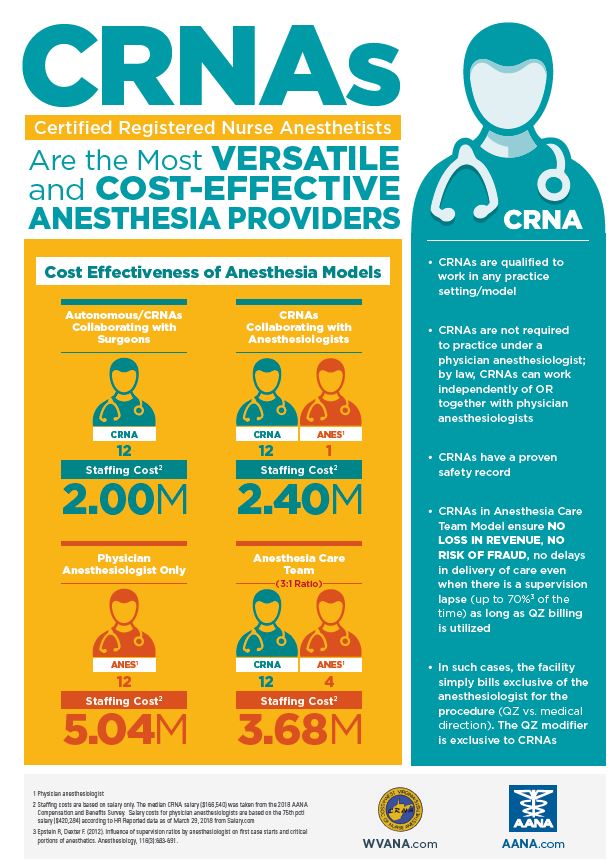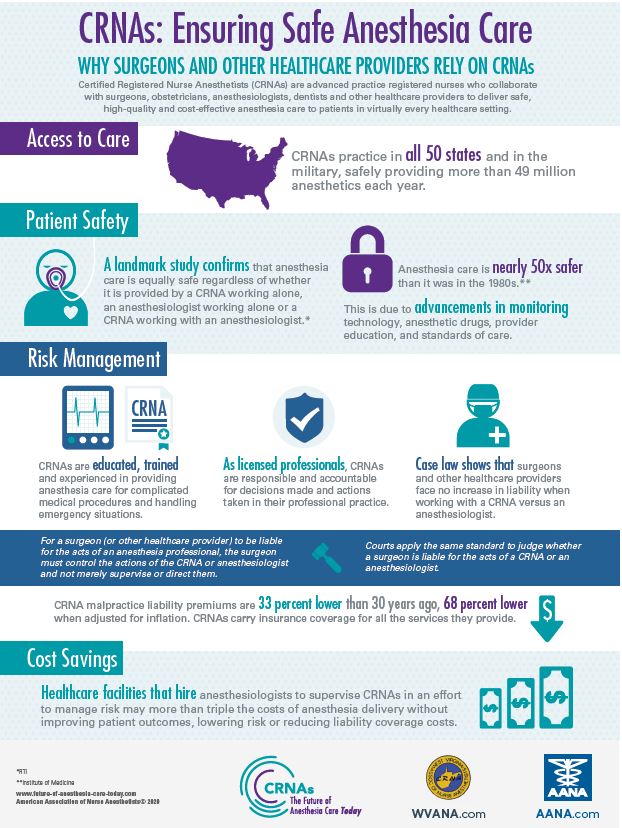Certified Registered Nurse Anesthetist (CRNA)
History: Nurse anesthetists have been providing anesthesia care to patients in the United States for more than 150 years. The CRNA (Certified Registered Nurse Anesthetist) credential came into existence in 1956. The title “nurse anesthesiologist,” which is synonymous with the title “nurse anesthetist,” is used by some CRNAs.
Prolific Providers: CRNAs are anesthesia professionals who safely administer more than 45 million anesthetics to patients each year in the United States, according to the American Association of Nurse Anesthetists (AANA) 2018 Member Profile Survey.
Rural America: CRNAs are the primary providers of anesthesia care in rural America, enabling healthcare facilities in these medically underserved areas to offer obstetrical, surgical, pain management and trauma stabilization services. In some states, CRNAs are the sole providers in nearly 100 percent of the rural hospitals.
Anesthesia Safety: According to a 1999 report from the Institute of Medicine, anesthesia care is nearly 50 times safer than it was in the early 1980s. Numerous outcomes studies have demonstrated that there is no difference in the quality of care provided by CRNAs and their physician counterparts.
Practice of Nursing: CRNAs provide anesthesia in collaboration with surgeons, dentists, podiatrists, physician anesthesiologists, and other qualified healthcare professionals. When anesthesia is administered by a nurse anesthetist, it is recognized as the practice of nursing; when administered by a physician anesthesiologist, it is recognized as the practice of medicine. Regardless of whether their educational background is in nursing or medicine, all anesthesia professionals give anesthesia the same way.
Autonomy and Responsibility: As advanced practice registered nurses, CRNAs practice with a high degree of autonomy and professional respect. They carry a heavy load of responsibility and are compensated accordingly.*
Practice Settings: CRNAs practice in every setting in which anesthesia is delivered: traditional hospital surgical suites and obstetrical delivery rooms; critical access hospitals; ambulatory surgical centers; the offices of dentists, podiatrists, ophthalmologists, plastic surgeons, and pain management specialists; and U.S. military, Public Health Services, and Department of Veterans Affairs healthcare facilities.
Military Presence: Nurses first provided anesthesia on the battlefields of the American Civil War. During WWI, nurse anesthetists became the predominant providers of anesthesia care to wounded soldiers on the front lines; today, CRNAs continue to be the primary providers of anesthesia care to U.S. military personnel on front lines, navy ships, and aircraft evacuation teams around the globe.
Cost-Efficiency: Managed care plans recognize CRNAs for providing high-quality anesthesia care with reduced expense to patients and insurance companies. The cost-efficiency of CRNAs helps control escalating healthcare costs.
